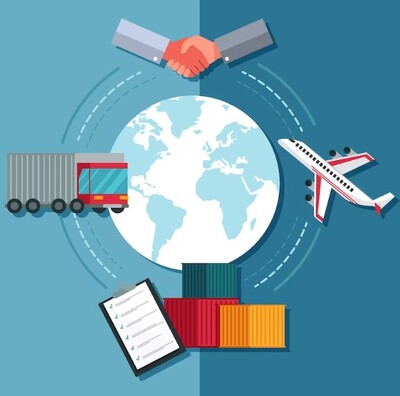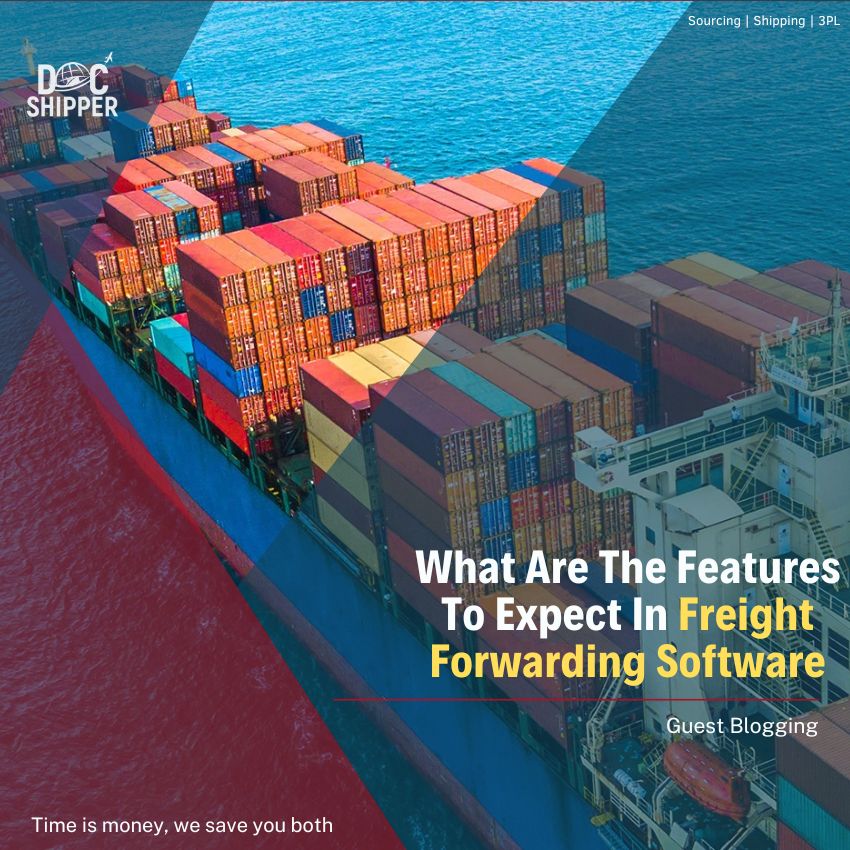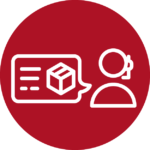Freight forwarding is an important process in the global supply chain industry because it allows businesses to transport goods across borders and around the world. However, freight forwarders may find it difficult to manage and coordinate all aspects of this complex process. Fortunately, the advent of freight forwarding software has made this process easier and more efficient. In this article, we will analyze the benefits and features of freight forwarding software, as well as how it can change the way freight forwarding is done.
DocShipper is a global shipping and logistics provider that offers end-to-end solutions for businesses of all sizes. They specialize in international freight forwarding, customs clearance, warehousing, and e-commerce fulfillment services.
DocShipper info : Are you considering shipping goods to the UK? DocShipper takes care of shipping your goods using the mode of transportation that works best for you from any part of the world. Our multimodal service handles everything. Fill out our form, and you'll receive feedback from our experts within 24 hours.
Table of Contents
What are the expectations for the Freight Forwarding Software?
The global freight forwarding market is expected to continue its growth path in 2023 and beyond. As businesses continue to operate globally, the demand for reliable and efficient transportation of goods will only increase.
According to a report by Market Research Future, the global freight forwarding market is projected to reach a value of USD 218.8 billion by 2023, growing at a CAGR of 4.8% during the forecast period. The Asia-Pacific region is expected to dominate the market, with China and India being the key contributors to the growth. Europe and North America are also expected to witness significant growth in the market.
DocShipper Alert : As an e-commerce trader, dealing with the logistics process can be challenging. Our 3PL and warehousing department makes this possible for you. Our goal is to relieve online retailers of the responsibility of organizing operations, storage facilities, and documentation. Contact us in just one click if you want more details.
What are the modern-day challenges of freight forwarding software in the transportation and logistics industry?
 Increase in automated operations
Increase in automated operations
One of the most prominent trends in the global freight forwarding market is the increasing adoption of technology. As the industry becomes more digitally driven, freight forwarding companies are investing heavily in automation, data analytics, and other advanced technologies to improve their operational efficiency, enhance visibility into supply chains, and provide better customer service.
Change to digitalization
With the rise of digitalization, the freight forwarding industry has been quick to adopt new technologies such as blockchain, automation, and artificial intelligence. These technologies have enabled freight forwarders to streamline their operations, increase efficiency, and offer better services to their customers.
The need for sustainability
Another key trend in the freight forwarding market is the growing demand for sustainable and environmentally-friendly logistics solutions. With the global focus on reducing carbon emissions and mitigating the impact of climate change, companies are increasingly seeking out freight forwarding partners that can provide eco-friendly transportation options such as electric vehicles, hybrid trucks, and rail transport.
Arising trade disputes
The ongoing trade tensions between major economies such as the US and China are also expected to impact the global freight forwarding market in 2023. As tariffs and trade barriers continue to rise, freight forwarding companies may need to adapt their strategies to navigate complex and volatile supply chains.
Globalization
As the world becomes increasingly interconnected and globalized, the freight forwarding industry has seen significant growth over the years. In 2023, the global freight forwarding market is expected to continue its upward trajectory, driven by factors such as expanding international trade, technological advancements, and the growing importance of supply chain management.
Evolution of international trade

Supply chain management
In addition, the growing importance of supply chain management has also contributed to the growth of the freight forwarding market. As businesses increasingly focus on optimizing their supply chains, they are relying more on freight forwarders to manage their logistics operations. Freight forwarders are uniquely positioned to provide end-to-end supply chain solutions, from sourcing and procurement to transportation and delivery.
Political Threats
However, the freight forwarding market is not without its challenges. One of the biggest challenges facing the industry is the ongoing trade tensions between major economies such as the US and China. These tensions have led to an increase in tariffs and trade barriers, which have in turn affected the flow of goods across borders. In addition, the freight forwarding market is not without its challenges COVID-19 pandemic has also had a significant impact on the market, disrupting global supply chains and causing delays and disruptions in transportation.
DocShipper Tip : Finding the perfect supplier can be difficult. Here are some sourcing recommendations made by DocShipper to make the process of locating a practical supplier easier. For more information, do not hesitate to contact us
The key features of freight forwarding software
The freight forwarding system is changing the way we manage our global logistics. This powerful tool automates the entire freight forwarding process, from quotation to delivery, making it easier than ever before to manage complex shipping operations. With its intuitive user interface, freight forwarders can easily customize their services to meet their customer's needs and save time and money in the process.
In the following lines, we will explore some of the key features to expect in freight forwarding system software:
Shipment Tracking
Shipment tracking is one of the most important features of freight forwarding system software. It enables freight forwarders to track the movement of goods from the point of origin to the final destination. Shipment tracking provides real-time updates on the location of the shipment, estimated time of arrival, and any delays that may occur. And it allows freight forwarders to provide their customers with accurate and up-to-date information about the status of their shipments. This information can help freight forwarders proactively manage potential problems and keep their customers informed of the shipment's progress.
Document management
Freight forwarding involves a lot of paperwork, including bills of lading, commercial invoices, and customs clearance documents. Managing all these documents manually can be time-consuming and prone to errors. Freight forwarding system software automates the process of document management, making it more efficient and accurate. This feature allows freight forwarders to generate and manage all the necessary documents electronically, reducing the risk of errors and delays.
Freight rate management
Freight rates can vary depending on the mode of transportation, the type of goods, and the destination. The freight forwarding system software enables freight forwarders to manage their freight rates more efficiently. This feature allows freight forwarders to access real-time information on freight rates from different carriers, enabling them to choose the most cost-effective option for their customers.
Access to one database for all users
Access to one database for all users is becoming increasingly important in today's digital world. With the increasing number of users and their ever-growing need for data, having access to a single database that everyone can use is essential. This will help to ensure that all users have the same access to information, eliminating any potential discrepancies between different user groups. Furthermore, this will also make it easier for companies to manage their data and provide updates in a timely manner. Having access to one database allows companies to keep track of their customer's data more easily and securely, ensuring that no information is lost or misused.
Automated Customs Clearance
Customs clearance is a critical part of the freight forwarding process, and it can be a time-consuming and complex task. An advanced freight forwarding system should include automated customs clearance functionality, allowing users to submit customs documentation electronically and track the clearance process in real time. This feature can help expedite the clearance process and minimize the risk of delays or errors. When a shipment arrives in the US for example, an importer who has used an advanced freight forwarding provider will often receive a notification that their package is waiting for customs clearance, and optionally able to track the status of the shipment. The importer will then be given options to notify or instruct the provider to handle customs clearance on their behalf or schedule a time for it to be done by someone else.
Invoice management
It is an essential feature of freight forwarding software that helps companies streamline their billing process and ensure accurate and timely payment. Without a robust invoice management system, companies may struggle with manual data entry, errors in billing, and delays in payment processing, which can ultimately impact their cash flow and profitability. By incorporating invoice management into their freight forwarding software, companies can automate invoicing, reduce errors, improve efficiency, and maintain better visibility into their financial performance. This can lead to increased customer satisfaction, stronger relationships with vendors, and ultimately, improved profitability.
Warehouse Management
Freight forwarding often involves warehousing and distribution, and a comprehensive freight forwarding system should include warehouse management functionality. This feature allows users to manage inventory, track shipments in and out of the warehouse, and automate key tasks such as picking and packing. A robust warehouse management system can help improve efficiency, reduce errors, and enhance customer satisfaction.
Analytics and Reporting
Data is a critical asset in the freight forwarding industry, and a modern freight forwarding system should include analytics and reporting functionality. This feature allows users to generate reports and visualize data to gain insights into key performance indicators such as transit times, on-time delivery rates, and freight spending. This information can help freight forwarders make data-driven decisions, identify areas for improvement, and optimize their operations. The ability to pull data from the system and create reports is essential for every freight forwarder. The type and complexity of the data will vary depending on the needs, but it should have some basic features such as: Providing this functionality allows users to gain insights into their operations, identify areas for improvement, and optimize their operations. It also helps with decision-making by providing a better understanding of performance indicators such as on-time delivery rates or transit times.
DocShipper Tip : All of your relevant documentation must be prepared, and copies must be kept when engaged in shipping procedures. There should be documentation for each process. Please get in touch with DocShipper for assistance with these time-consuming documentation procedures and customs clearance, as they are committed to saving you both time and money. If you are interested in these services, Contact us
Conclusion
Finally, freight forwarding system software is an effective tool for streamlining the entire freight forwarding process, improving communication and collaboration, and increasing visibility and transparency. It's critical to look for key features like automated shipment tracking, document management, automated customs clearance, warehouse management, and analytics and reporting tools when choosing a freight forwarding system. Freight forwarders can stay competitive, give exceptional service to their customers, and optimize their operations.
FAQ | What Are The Features Of Freight Forwarding Software
What is freight forwarding software?
Freight forwarding software is a type of software designed to help freight forwarders, transportation companies, and logistics companies manage their operations. It may include a variety of functions that enable users to streamline their workflow in real time.
What are the benefits of using freight forwarding software?
Freight forwarding software can help companies save time and money by automating repetitive tasks, reducing errors, and providing real-time visibility into the status of shipments. It can also help improve customer service by providing better tracking and communication tools.
How do I choose the right freight forwarding software for my business?
When choosing freight forwarding software, consider your specific needs and requirements. Look for software that is user-friendly, customizable, and integrates with other systems you may be using. It's also important to consider the cost and support options.
What are some popular freight forwarding software options?
Software options for freight forwarding include Freightos, ShipStation, Magaya, CargoWise, and Flexport. Every option has different features and advantages, so it's crucial to compare them all to determine which one best suits your needs.
DocShipper info: Do you like our article today? For your business interest, you may like the following useful articles :
- Comment réussir une chaîne logistique plus résiliente : votre guide complet
- Comment lancer sa boutique e-commerce rapidement ?
- Les tendances du secteur transport et de la logistique au Royaume-Uni : prévisions 2023 – 2028
- Tout savoir sur les Agents 3PL [Process – Avantages – Logiciel]
- Comment réduire les coûts et les délais de production
DocShipper Advise : We help you with the entire sourcing process so don't hesitate to contact us if you have any questions!
- Having trouble finding the appropriate product? Enjoy our sourcing services, we directly find the right suppliers for you!
- You don't trust your supplier? Ask our experts to do quality control to guarantee the condition of your goods!
- Do you need help with the logistics? Our international freight department supports you with door to door services!
- You don't want to handle distribution? Our 3PL department will handle the storage, order fulfillment, and last-mile delivery!
DocShipper | Procurement - Quality control - Logistics
Alibaba, Dhgate, made-in-china... Many know of websites to get supplies in Asia, but how many have come across a scam ?! It is very risky to pay an Asian supplier halfway around the world based only on promises! DocShipper offers you complete procurement services integrating logistics needs: purchasing, quality control, customization, licensing, transport...
Communication is important, which is why we strive to discuss in the most suitable way for you!


 Increase in automated operations
Increase in automated operations




